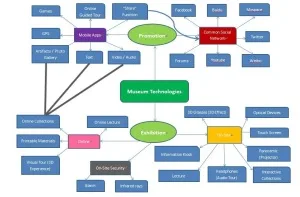Understanding Heritage Management: Preserving Cultural Heritage for Future Generations
Heritage management is a vital discipline that focuses on the conservation, preservation, and promotion of cultural heritage. It encompasses a wide range of practices aimed at protecting historical sites, artifacts, traditions, and landscapes for future generations. As society evolves and urbanization accelerates, effective heritage management has become increasingly important to safeguard our cultural legacy. In this article, we will explore the key aspects of heritage management, its significance, and the challenges it faces, while integrating internal linking keywords related to heritage management services and cultural preservation strategies.
The Importance of Heritage Management
Heritage management plays a crucial role in maintaining our connection to the past. It serves several purposes:
1. Cultural Identity and Community Pride
Heritage sites and practices foster a sense of identity and belonging among communities. They provide a tangible link to history, instilling pride in local traditions and achievements. Heritage management ensures that these cultural markers are preserved, allowing communities to celebrate their unique narratives.
2. Economic Benefits
Preserving heritage sites can have significant economic benefits. Heritage tourism is a growing sector, with travelers seeking authentic experiences. Well-managed heritage sites attract visitors, generating revenue for local economies. By investing in heritage management services, communities can tap into this potential, creating jobs and supporting local businesses.
3. Educational Value
Heritage sites serve as invaluable educational resources. They provide opportunities for learning about history, architecture, and cultural practices. Effective heritage management promotes educational programs, workshops, and tours, helping to engage the public and foster appreciation for cultural heritage.
4. Environmental Sustainability
Heritage management often intersects with environmental conservation. Many heritage sites are located in ecologically sensitive areas. By promoting sustainable practices in the management of these sites, heritage managers can protect both cultural and natural resources. This approach is vital for maintaining the integrity of landscapes and biodiversity.
Key Aspects of Heritage Management
Heritage management involves a multifaceted approach that encompasses various practices and strategies. Some of the key aspects include:
1. Documentation and Research
Accurate documentation of heritage sites is essential for effective management. This includes gathering historical data, conducting surveys, and creating inventories of artifacts and structures. Research helps heritage managers understand the significance of sites, enabling informed decision-making regarding their preservation.
2. Conservation Techniques
Conservation techniques vary based on the type of heritage being managed. For built heritage, this may involve structural repairs, materials conservation, and restoration efforts. For intangible heritage, such as traditions and practices, documentation and promotion of community involvement are key strategies. Employing qualified professionals in heritage management services ensures that appropriate techniques are applied.
3. Community Involvement
Engaging local communities in heritage management is crucial for successful outcomes. Communities often possess valuable knowledge about their cultural heritage and can provide insights into preservation strategies. By involving community members in decision-making processes, heritage managers can foster a sense of ownership and responsibility, ensuring the sustainability of cultural practices.
4. Legislation and Policy Development
Heritage management is often guided by laws and policies that establish frameworks for preservation efforts. Governments at various levels implement regulations to protect heritage sites, ensuring they are not compromised by development or neglect. Heritage managers must stay informed about legislative changes and advocate for policies that promote effective heritage management.
5. Crisis Management
Natural disasters, climate change, and urbanization pose significant threats to heritage sites. Effective heritage management includes developing crisis management plans to mitigate risks and respond to emergencies. This involves assessing vulnerabilities, implementing preventive measures, and preparing for recovery efforts after a crisis.
Challenges in Heritage Management
While the importance of heritage management is clear, several challenges hinder effective practices:
1. Funding Constraints
Securing funding for heritage management initiatives can be challenging. Many heritage projects rely on grants and donations, which may not always be available. Heritage managers must explore diverse funding sources, including public-private partnerships, to ensure sustainable financial support.
2. Balancing Development and Preservation
Urban development often conflicts with heritage preservation. As cities expand, valuable cultural sites may be at risk of demolition or alteration. Heritage managers must navigate these challenges, advocating for responsible development practices that respect and integrate heritage considerations.
3. Raising Awareness and Engagement
Increasing public awareness about the importance of heritage management is essential for garnering support. Heritage managers must employ effective communication strategies to engage communities, stakeholders, and policymakers in preserving cultural heritage. Social media, public events, and educational programs can help raise awareness and foster community involvement.
4. Evolving Technology
The rapid advancement of technology presents both opportunities and challenges for heritage management. While digital tools can enhance documentation and promotion efforts, they can also lead to the commodification of cultural heritage. Heritage managers must strike a balance between embracing technology and preserving the authenticity of cultural practices.
Case Studies in Effective Heritage Management
Examining successful case studies can provide valuable insights into effective heritage management practices. Here are a few notable examples:
1. The Burra Charter (Australia)
The Burra Charter is a pivotal document in Australian heritage management, providing a framework for managing cultural heritage places. It emphasizes community involvement, sustainable practices, and the significance of cultural significance assessments. The Charter has influenced heritage management policies across Australia, serving as a model for effective practices.
2. The Historic Urban Landscape Approach (UNESCO)
UNESCO’s Historic Urban Landscape approach encourages the integration of heritage conservation into urban planning. This framework promotes the sustainable management of urban areas by recognizing the significance of cultural heritage within the broader context of social, economic, and environmental factors. Several cities worldwide have adopted this approach, demonstrating its effectiveness in balancing development and preservation.
3. The Heritage Lottery Fund (UK)
The Heritage Lottery Fund in the United Kingdom provides funding for heritage projects, supporting conservation efforts, educational programs, and community engagement initiatives. This funding model has successfully revitalized numerous heritage sites, fostering local pride and generating economic benefits through heritage tourism.
Conclusion
Heritage management is a vital practice that preserves our cultural legacy for future generations. By understanding its significance, key aspects, and challenges, we can advocate for effective strategies that protect our heritage. Engaging communities, leveraging technology, and securing funding are essential components of successful heritage management services. As we navigate the complexities of modern society, let us prioritize the preservation of our cultural heritage, ensuring that it remains a source of pride, identity, and inspiration for generations to come.






